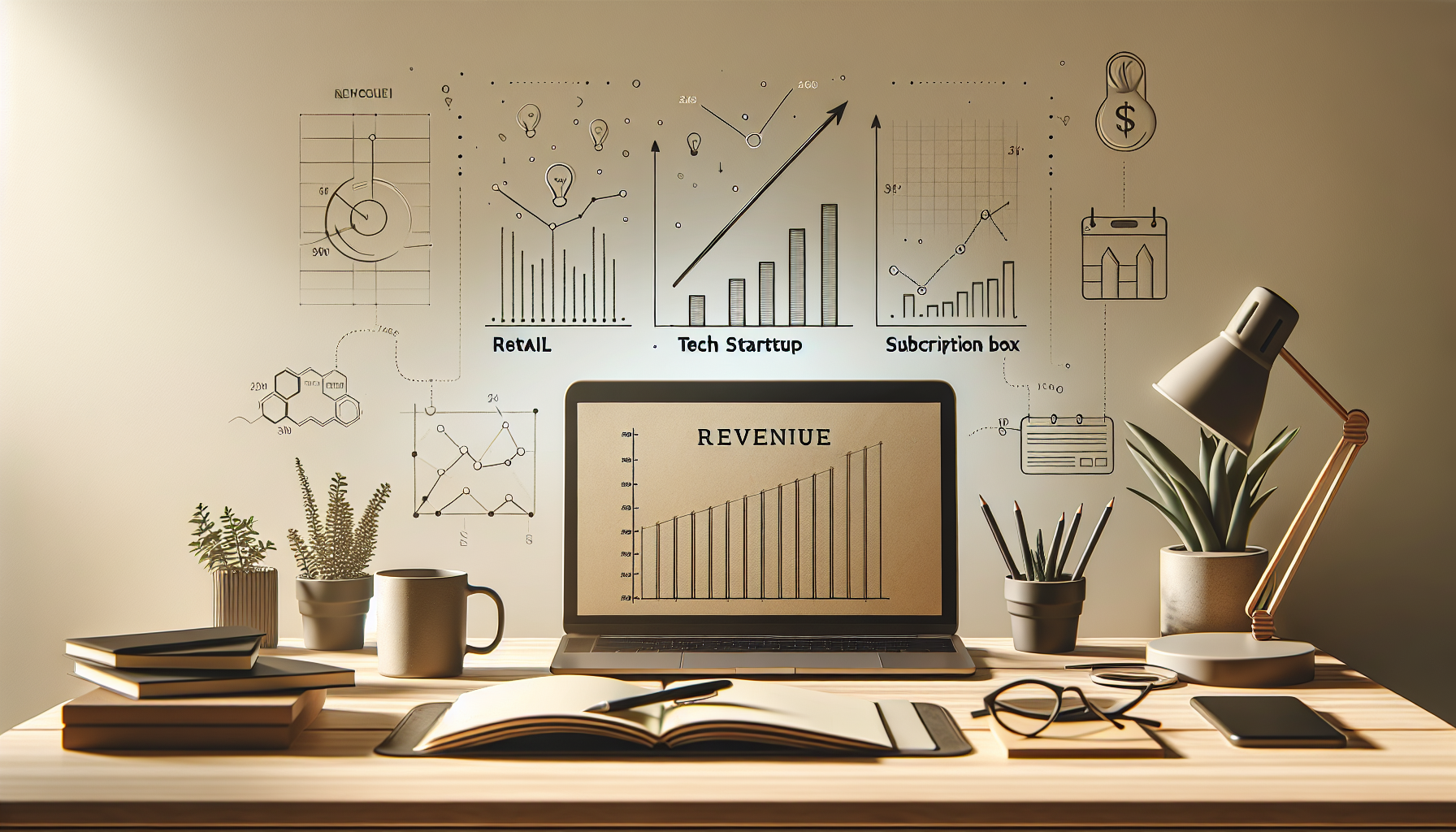Let’s be real—revenue forecasting can feel like trying to predict the weather in a new city. You might be overwhelmed with data, uncertain about trends, and wondering whether you’re heading for a sunny profit or a stormy loss. It’s a common struggle, and you’re definitely not alone in feeling this way!
But fear not! If you stick around, you’ll discover some great prompts that can simplify your forecasting process using ChatGPT. You’ll learn how to tailor these prompts to get the insights you truly need, and maybe even have a little fun along the way.
Get ready to dive into everything from basic prompts to industry-specific tips, and don’t worry—I’ve got your back on avoiding the common pitfalls. Let’s turn that forecasting frown upside down!
Key Takeaways
- Revenue forecasting is essential for effective financial planning in businesses.
- Utilizing ChatGPT can streamline the forecasting process with targeted prompts.
- Start with specific prompts that incorporate quality historical data for better accuracy.
- Test and refine your prompts to ensure clarity and effectiveness.
- Industry-specific prompts can yield better insights tailored to your market.
- Avoid common pitfalls like ignoring economic factors and not regularly updating data.
- Customize prompts by including relevant data, time frames, and specific influencing factors.

Prompts for Revenue Forecasting with ChatGPT
Revenue forecasting is crucial for any business looking to plan its financial future effectively.
Using ChatGPT can streamline this process, helping you generate the insights you need with just a few prompts.
Here are some valuable prompts you can use:
- “Generate a revenue forecast for my SaaS company based on current subscription metrics and historical data.”
- “What revenue predictions can you provide if my e-commerce site increases its ad spend by 20%?”
- “Create a quarterly revenue forecast based on a 10% growth rate over the last year.”
- “How do seasonal trends affect revenue predictions for a retail business?”
By inputting these prompts into ChatGPT, you can leverage AI for revenue predictions that are both comprehensive and tailored to your business model.
How to Generate Accurate Revenue Forecasting Prompts
Generating accurate revenue forecasting prompts begins with understanding your business’s specific needs.
Start by collecting high-quality data, as your output will be only as good as the information fed into the system.
Here are steps to create effective revenue prompts:
- Define your key performance indicators (KPIs) that impact revenue, such as sales volume, customer acquisition cost, and churn rate.
- Gather historical data and trends to understand patterns that can inform your forecasts.
- Craft prompts that incorporate these data points, asking specific questions that lead to actionable insights.
- Test and refine your prompts for clarity and effectiveness with ChatGPT to ensure they generate accurate outputs.
For example, instead of asking, “What will my revenue be next quarter?”, try “Based on a 15% increase in customer acquisition, estimate my total revenue for Q2.” This specificity gives better context for ChatGPT to work with.
Basic Revenue Forecasting Prompts to Use
If you’re just starting with revenue forecasting, basic prompts can help you grasp fundamental concepts.
Consider these simple yet effective prompts:
- “Estimate my monthly revenue for the next six months based on last year’s sales data.”
- “What basic metrics should I consider for a preliminary revenue forecast?”
- “Summarize the essential components of a basic revenue forecast model.”
These prompts provide a solid foundation for understanding revenue estimation and can easily be expanded with more detail as you develop your forecasting skills.
Advanced Revenue Forecasting Prompts for Businesses
Once you’re comfortable with basic prompts, you can dive into advanced techniques to create more sophisticated forecasts.
These prompts will help your business leverage complex models and analytics:
- “Create a detailed revenue forecast incorporating multiple variables, such as marketing spend, customer demographics, and economic trends.”
- “What advanced analytics techniques can I apply to enhance the accuracy of my revenue predictions?”
- “Estimate my expected revenue growth using a multi-variable regression analysis based on recent market trends.”
Using advanced prompts not only refines your forecasting strategy but also provides deeper insights into the factors affecting your revenue streams.

Industry-Specific Revenue Forecasting Prompts
When forecasting revenue, it’s crucial to consider industry-specific factors that can significantly influence your predictions.
Here are some tailored prompts for different sectors:
- “Analyze the revenue impact of a new product launch in the retail industry, considering seasonal sales trends.”
- “What factors should I include in a revenue forecast for a tech startup in its first year?”
- “Create a revenue forecast for a restaurant by examining local dining trends and customer preferences.”
- “Estimate revenue for a subscription box service based on customer churn rates and acquisition costs.”
By using these prompts, you can better align your revenue forecasts with the unique dynamics of your industry.
Additionally, remember to integrate relevant data specific to your sector for more accurate predictions.
Common Mistakes to Avoid in Revenue Forecasting Prompts
Many businesses fall into traps that lead to inaccurate revenue forecasts, and knowing these common mistakes can help streamline your process.
Here are some pitfalls to avoid:
- “Provide a revenue forecast without considering external economic factors, like inflation or market competition.”
- “Fail to update historical data regularly, leading to outdated models and inaccurate predictions.”
- “Neglect the importance of defining clear KPIs before generating forecasts.”
- “Assume a linear growth model without considering variations and seasonality.”
By recognizing these errors, you can refine your prompts and improve your forecasting accuracy.
For example, instead of asking for a simple revenue prediction, try contextualizing your question with data points and variables.
Tips for Customizing Your Revenue Forecasting Prompts
Customizing your prompts is key to getting the most relevant and actionable insights from ChatGPT.
Here are some tips to help you tailor your revenue forecasting prompts:
- “Incorporate relevant historical data when asking for forecasts; for example, provide last year’s sales figures.”
- “Specify the time frame you want forecasts for, such as quarterly or yearly estimates.”
- “Mention specific factors that could impact revenue, like upcoming marketing campaigns or economic conditions.”
- “Adjust the complexity of your prompts based on the depth of information you need. Ask for high-level trends or detailed breakdowns as needed.”
By personalizing your prompts, you enhance the precision of the outputs you receive.
For instance, instead of simply asking, “What will my revenue be next year?” you could say, “Considering a 25% increase in marketing efforts and a 15% anticipated growth in the market, forecast my revenue for the next year.”

Additional Resources for Revenue Forecasting Using ChatGPT
When it comes to revenue forecasting, having the right resources at hand can make a significant difference.
Here are some valuable resources you can explore:
- “List the top five tools you recommend for revenue forecasting.”
- “Share insightful articles or studies on revenue forecasting best practices.”
- “What online courses or webinars can I take to improve my forecasting skills?”
- “Recommend books that cover financial modeling and predictive analytics.”
Additionally, joining online forums and communities focused on revenue management can provide great insights and real-world examples.
Consider following industry leaders on social media for timely updates and innovative forecasting strategies.
Lastly, check for any free templates or calculators that can simplify your revenue forecasting process.
FAQs
Basic prompts may include questions about historical sales data, market trends, and customer acquisition costs. These can help establish a foundation for forecasting future revenue accurately.
Avoid vague or overly complex prompts, as well as neglecting to incorporate recent market changes or historical data. These mistakes can lead to inaccurate forecasts and misguided business decisions.
Customize prompts by integrating industry-specific metrics or terminology, focusing on unique market conditions, and addressing trends relevant to your sector to enhance the accuracy of the forecasts.
Utilize online courses, industry reports, and guides specifically on revenue forecasting. Additionally, exploring relevant forums and community discussions can provide valuable insights suitable for your business model.
